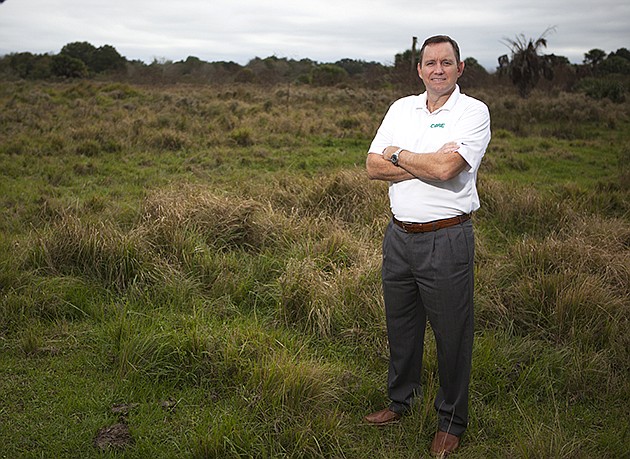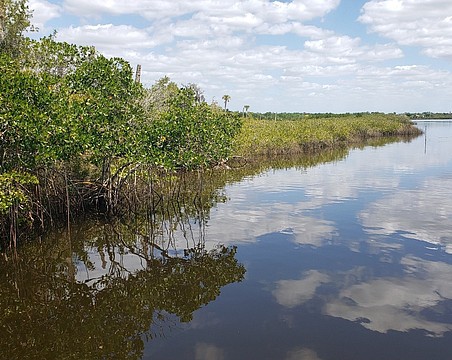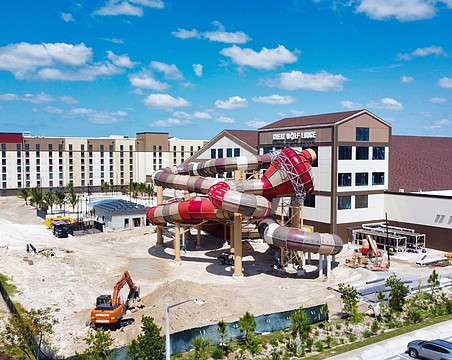A confluence of factors ranging from residential growth statewide to shrinking inventory and a desire for updated building features is spurring a wave of speculative industrial development in the Interstate 4 corridor between Tampa and Orlando.
In all, more than 2 million square feet of distribution space is either under construction or planned in the corridor, the result of the growing acceptance of Internet-based commerce and the area's central location. From Lakeland and Plant City, for instance, distributors can reach roughly 18 million residents within a day's drive.
Already, there is 500,000 square feet of speculative space that is being built, says Rian Smith, a first vice president with commercial brokerage firm CBRE Inc. who specializes in industrial projects.
“People are moving to Florida, and there's a logistical advantage for companies to being on Interstate 4,” says Smith, whose firm represents Lakeside Station, a Plant City business park where as much as 10 million square feet of office and industrial space is planned.
“There are not many areas that can offer what the corridor does, in terms of reaching population centers,” Smith adds.
Speculative development — where buildings are constructed without tenants in place -- is often riskier than traditional development, but can be lucrative for builders who are able to time a market right.
The current wave of spec comes at a time, too, when national retailers such as Amazon, Wal-Mart, Rooms-To-Go and others are taking advantage of resident influx -- Florida is now the nation's third-most populous state -- to enhance logistics networks.
That has led, in turn, to increased desire among competitors to be in the same area to ship goods, a phenomenon that has pushed vacancy rates down to the low single digits.
CBRE's Smith and others maintain the spec wave, along with continued build-to-suit activity, will dominate the I-4 industrial market through the end of 2017.
“Many companies that identify the corridor as an area to be in don't have time to wait for a building to be constructed, so for them, speculative space saves time and money,” says Lisa Ross, a senior vice president with commercial brokerage Avison Young, in Tampa.
“Developers know this, and those that are up or ready are going to reap a lot of success in the coming year,” she adds.
Atlanta-based Ridge Development, the industrial development arm of Transwestern Development Co., is building a pair of 245,000-square-foot industrial projects near Lakeland, about one mile from the interstate, on a speculative basis.
The first of the pair is slated to be completed next month, and will rent for $4.95 per square foot, on a triple-net basis.
“When we started our building, the vacancy in the corridor was about 4%, one of the best rates in the country,” says Steve Kros, a Ridge executive vice president. “Given the absorption of space in recent quarters, a real shortage of quality space has developed. It's pretty simple math, actually.
“And we feel confident that with the growth in e-commerce, companies are going to need buildings like ours so they can push delivery times lower and lower,” Kros adds.
Much of the new development is highlighting updated building features that modern distributors are seeking: higher ceiling heights, high-end sprinkler systems, on-site trailer parking and other features.
“There's a lot of flight to quality going on — companies are wanting to be in newer product with up-to-date features,” Smith says. “And for Class A space, if you are building it right now, you're not competing with anyone but yourself.”
Ridge's new building in Polk County, for instance, has a 32-foot clear ceiling height, up from a standard-sized 24-foot clear. That additional space allows retailers to stack materials and merchandise higher and rent less space overall.
Perhaps surprisingly, the speculative phenomenon has, to date, been limited to the I-4 corridor along Florida's Gulf Coast.
“It's not happening from Sarasota down to North Port,” says John Harshman, president of commercial brokerage Harshman & Co. “That's because a lot of distribution to Sarasota County is handled from Tampa or Lakeland. It would take someone with a lot of cash and a long-term view of the market.”
Bill Gonnering, a principal with commercial brokerage Investment Properties Corp., in Naples, says he knows of “nothing that's being built for distribution” in Lee County, because land costs make such development prohibitive.
“It would be very, very difficult,” Gonnering says. “We're not a cheap date here.”
In the I-4 corridor, by contrast, shrinking vacancy rates brought about by leasing activity is sparking spec development even as land costs are rising.
In the third quarter alone, Coca-Cola Enterprises, Masonite and Versatile Packagers leased 400,000 square feet, according to CBRE market research.
Total vacancy at the end of the third quarter totaled 7%, down from 7.4% in the second quarter, but that figure includes older, functionally obsolete space, brokers say.
But with the increased activity has come a rush by equity funds, real estate investment trusts and others to fund or build new industrial product.
“Already, the field is getting pretty crowded,” Kros says.
- K.L. McQuaid






